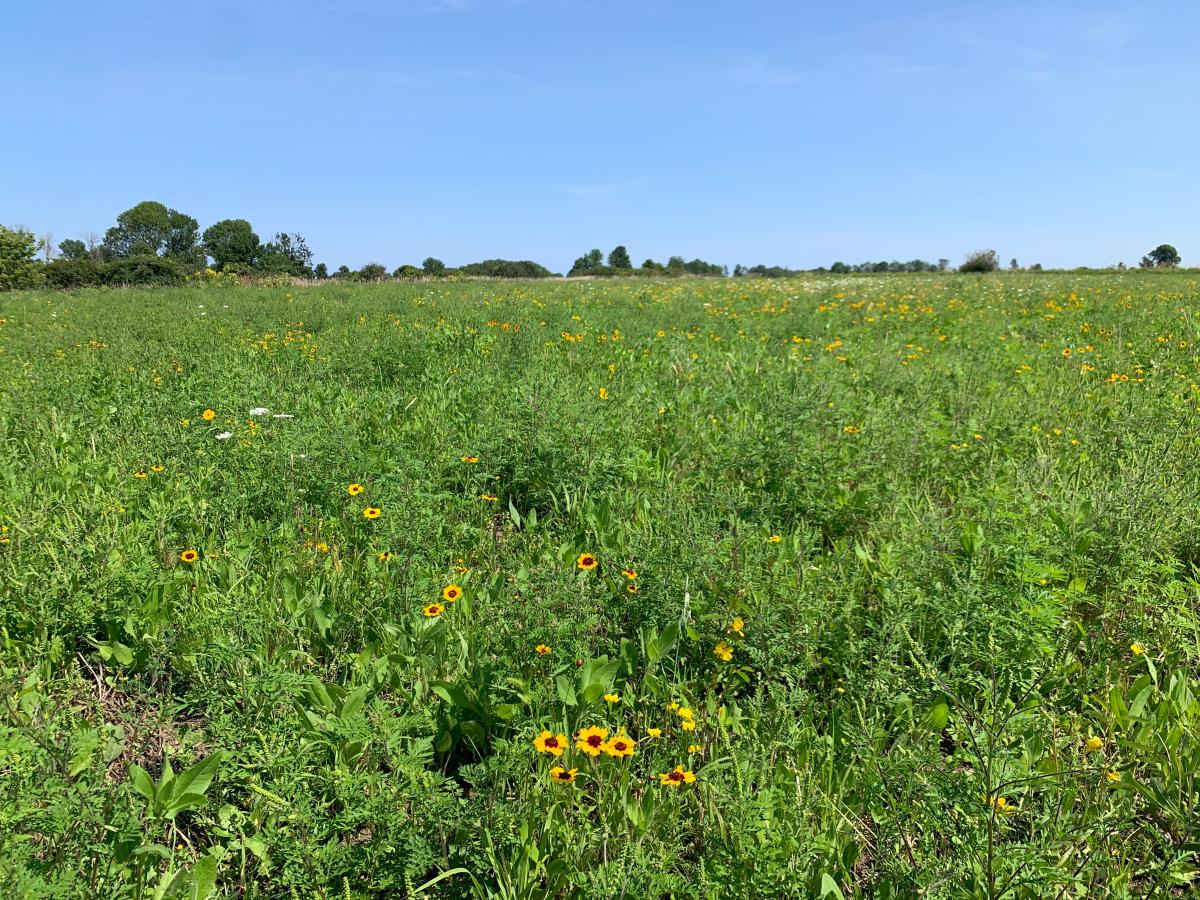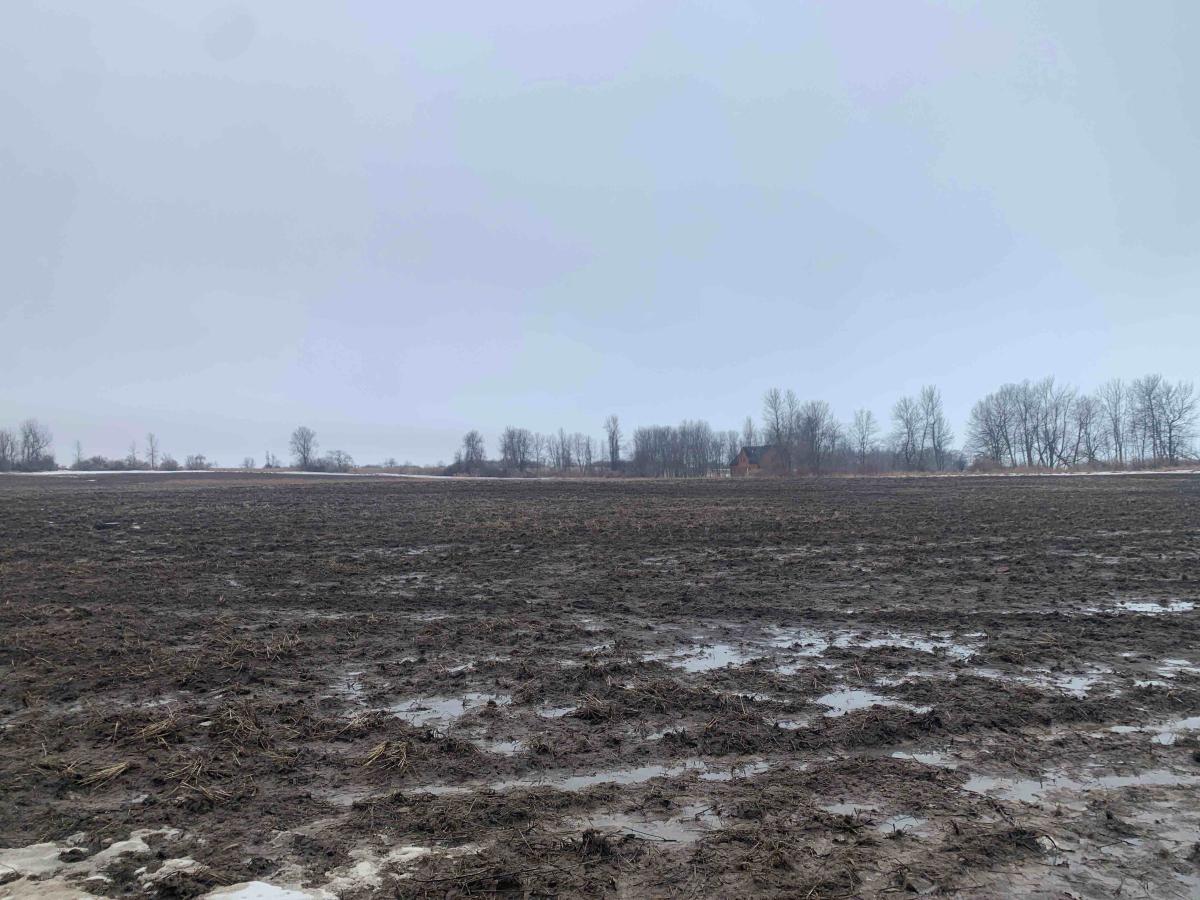This spring TILT acquired 209-acres on Fuller Bay in Cape Vincent creating the Edward and Marlene Schmeer Preserve. The team quickly undertook a restoration project to improve the ecological health and intrinsic qualities of the land. More specifically, about 160-acres of the property was in row crop production (soybean and corn). For decades, these lands were intensively farmed, with frequent tilling and fertilizer applications. Though these practices are important for improving crop yields, they unfortunately come with detrimental side effects to nearby wildlife and waterways. As part of TILT’s endeavor to properly steward our lands and improve the quality of life in the St. Lawrence River Valley, the organization saw this as an opportunity for natural rehabilitation.
Creating A Field of Dreams
The Land Trust also worked with the long-standing tenant farmer this spring to reseed the fields with a native upland meadow seed mix from Ernst Conservation Seeds. Funding assistance from the New York Sea Grant Small Grants Program was utilized for this seed. The mix, which contained a variety of attractive colorful forbs and deep-rooted perennial grasses.
Despite an abnormally dry June in Cape Vincent, the rains of late July and August helped these fields flourish. The cover crop has since been removed, and where there were once monotypic rows of soybean now stand lush and buzzing fields of bluestem, switchgrass, partridge pea, black-eyed Susans and coreopsis.
In creating a waterfront Field of Dreams, so to speak, TILT relied on a “If you build it, they will come,” restoration strategy. That is, with guided course correction, grassland species composition, and informed adaptive management, the Edward and Marlene Schmeer Preserve is anticipated to become an ecological hotspot; even more so than it already is. Bees, butterflies and moths will flutter between nectar-filled flowers, carrying their precious pollens that will drive genetic diversity that the fields have long-lacked. The dense grasses will begin their work to improve soil structure and carbon content, while hosting voles and rare songbirds that will bring specialized owls and raptors come winter. Rotational, late season mowing will provide for the maximum level of in-field structure, helping to bolster overall diversity.
It’s important to consider, though, that good things take time, and that this new meadow is merely in its infancy. Years will pass before its operating at its peak capacity; but 2023 marked a shift in trajectory for the lands surrounding Fuller Bay. A shift that will soon pay dividends to all within the web of life.





